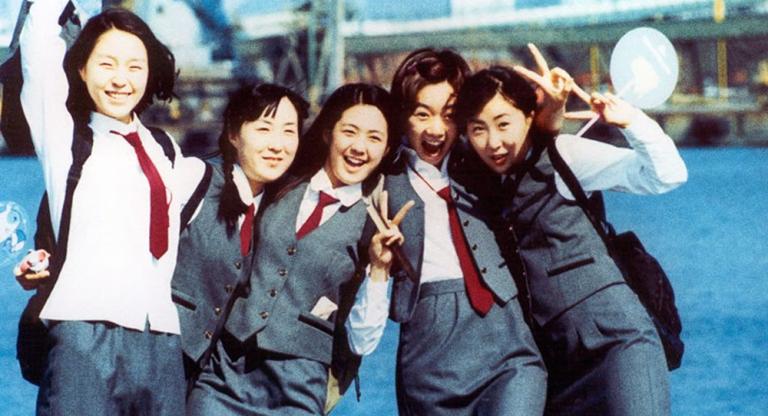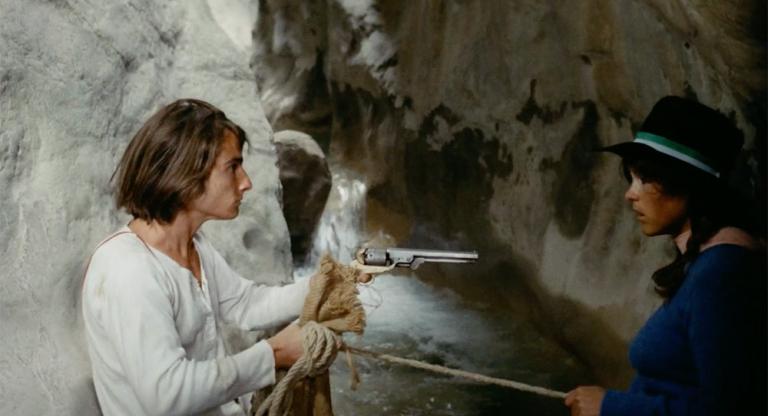Film Forum deserves praise for hosting a comprehensive retrospective honoring the Swedish filmmaker Bo Widerberg, guest-programmed by David Schwartz. Considerably further to the left of Ingmar Bergman (towards whom he held lifelong political, aesthetic and personal resentments), Widerberg is a prime example of a prestigious director whose contemporaneous prominence within cinephile culture did not survive the journey into the era of home video and streaming libraries. The series opens tonight with Elvira Madigan (1967), arguably his signature film, a melodrama about the eponymous rope dancer (originally born Hedvig Jensen) who became infamous in 1899 when she and her lover, a married cavalry officer named Sixten Sparre, fled to the countryside of neighboring Denmark where they lived for two impassioned months before Sparre killed Madigan and himself. Widerberg notoriously included a title card stating this tragic outcome at the beginning of his film, which stars Pia Degermark as Elvira and Widerberg’s regular collaborator Thommy Berggren as Sparre.
Elvira Madigan was one of the movies made famous in the ‘60s and ‘70s by Cinema 5, the legendary company owned and operated by the distributor Don Rugoff, recently profiled in Ira Deutchmann’s documentary Seeking Mr. Rugoff (2019). (As of this writing, Elvira Madigan can be watched on the Criterion Channel as part of “The Story of Cinema 5” series, which also includes The Fireman’s Ball, Harlan County U.S.A., and Z, among others.) Rugoff owned 11 cinemas within New York City at the peak of his power; like Dan Talbot, of New Yorker Films, he would show his own releases to money-printing effect. Elvira Madigan was a cultural sensation, propelling Widerberg to the arthouse vanguard and making $10 million in its U.S. domestic run (a dizzying $97 million today, adjusted for inflation.) In an obituary for Rugoff, Talbot wrote that, “Each theater had its own identity, separate and apart from the others, because Don liked to experiment with color, fabric, wall design, lighting, floor covering, bathroom fixtures, door handles, the box office.”
Indeed, part of the run-up to Elvira Madigan’s New York City release was a runway show organized by Rugoff, designed to foster interest in the film by suggesting a (bogus) emergent new wave of 19th-century inspired fashions. The New York Times fell for it, with Angela Taylor writing that the film’s cotton shirts and black ascot ties “might make a welcome change from the Mao shirts that are turning up in droves at parties these days.” In The New Yorker, Brendan Gill wrote, “I think Mr. Widerberg must have had the bold intention of making the most beautiful movie in history, and perhaps he has— it is certainly, in color and composition, the most beautiful movie I have ever seen.” (Cinema 5 ably spun this as “PERHAPS THE MOST BEAUTIFUL MOVIE IN HISTORY” on its posters.)
All this is to say Elvira Madigan would be worth seeing on the basis of its cultural significance alone, both within Swedish cinema and as a part of greater arthouse film history. But it’s also a beguiling and, indeed, gorgeous film, from a time before phrases like “luminous” or “sumptuous” were applied in catch-all fashion to garden variety costume epics or period pieces. Shot on location, heavily improvised, and bearing palpable traces of the workshopped intimacy shared between the filmmaker and his actors, Elvira Madigan depicts Sparre and Elvira’s tryst as unsustainable on account of their rejection of social norms, resulting in an extended dream sequence of a movie. Widerberg went on to make more straightforward leftist agitprop, including 1971’s Joe Hill, an improbably Paramount-backed biopic of the eponymous Swedish-American labor organizer (also played by Berggren) that abides the tropes of biopic narrative structure yet looks for alternative ways to deliver its dramatic payoff. But with its late-summer memento mori, Elvira Madigan is heavier on the vibes, ultimately becoming a meditation on the limits of freedom and the spoils of beauty. Like the psychedelic détournement of Daisies (1966), or the ecstatic shootout at the end of Bonnie and Clyde (1967), Widerberg’s film feels more liberated than liberatory.
Elvira Madigan screens tonight, November 7, and until next week, at Film Forum as part of the series “Bo Widerberg’s New Swedish Cinema.”



